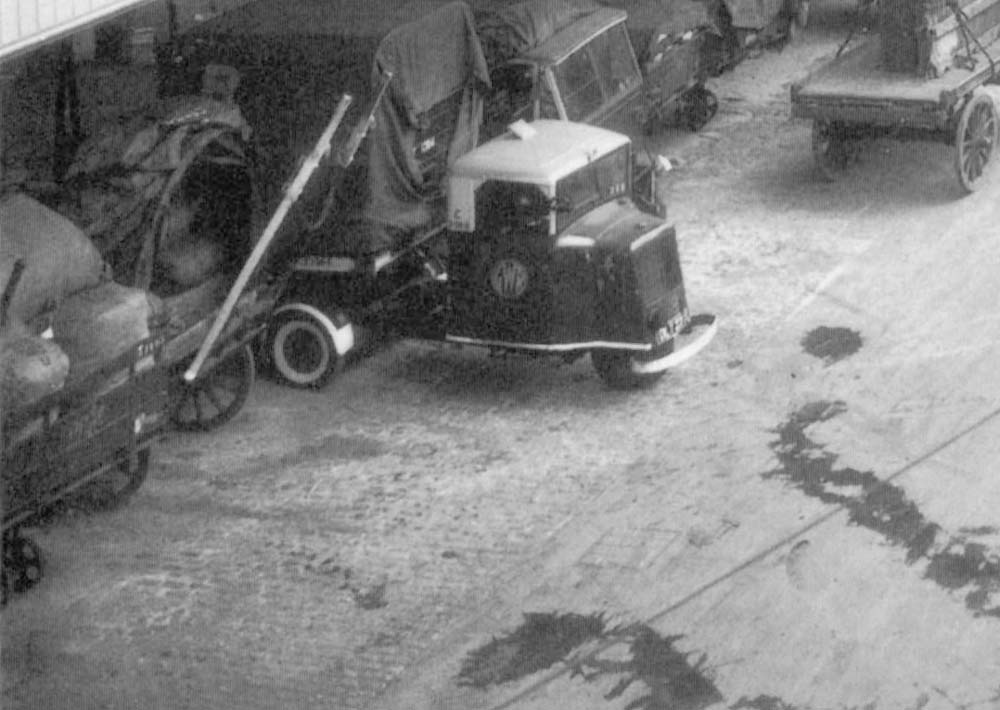|
|
 |
 |
|
GWR Route: Banbury to Wolverhampton
Hockley Station: gwrhd675b
 |
Close up of image 'gwrhd675' showing a three wheel
'mechanised horse' adjacent to a standard lorry and horse-drawn vehicle. These
three wheel articulated lorry cabs were developed in the 1930’s with the
intension of modernising distribution. In order to use motor vehicles in the
compact goods yards designed for the horse and dray, it was necessary to find a
vehicle with a small turning circle. The three wheel mechanised horse depicted
here was built by the Karrier Motor Company of Huddersfield and called the Cob.
It had a two-cylinder 7hp engine with chain-drive reduction gearing. A similar
design was built by Scammell lorries of Watford with a direct-drive
four-cylinder engine. Scammell had also developed and patented a coupling
system, which allowed the trailer to be coupled without the driver leaving the
cab, but in 1934 all four main railway companies made a joint agreement with
Scammell, which allowed this coupling gear to be used on all their vehicles
irrespective of the builder.
In the late 1930’s the Great Western Railway introduced
a new fleet numbering system whereby an initial letter indicated the vehicle
type (in this case C – Mechanical Horse). The following number indicted
the carrying capacity (in this case 3 – Mechanical Horse were normally
either three ton or six ton capacity). The remaining number was the unique
vehicle number. The white paint on the mudguard, the underneath edge of the cab
and bumper were safety features to help make the vehicle more visible in the
blackout. It is assumed that the white painted shafts on the horse drawn
vehicle alongside the lorry was for the same purpose.
Robert Ferris
 back back

|
|
|
